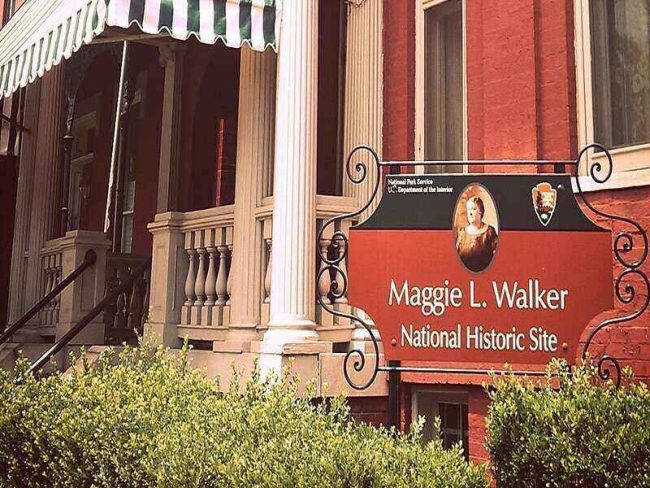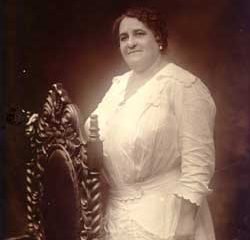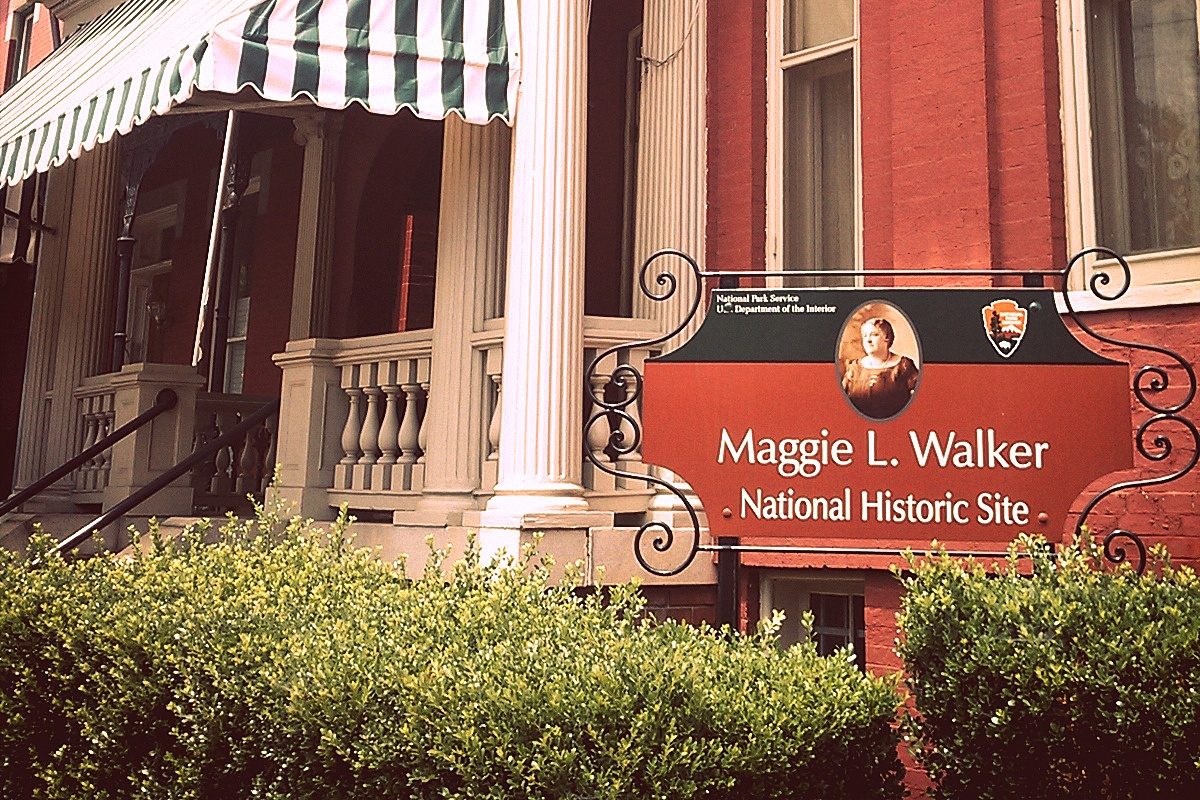|
Getting your Trinity Audio player ready...
|

Maggie Lena Walker founded and became the first female bank president in United States’ history. This was quite an accomplishment since, in 1903, the financial services industry was led by powerful white men. Not only did she knock the banking industry on its ear, but Walker’s achievement was also notable since she was the daughter of former slaves.
 She was born Maggie Lena Draper in Richmond, Virginia, on July 15, 1864. Her mom, Elizabeth, was a freedwoman and the assistant cook for a Civil War Union sympathizer — Elizabeth Van Lew — who owned the estate where Maggie was born.
She was born Maggie Lena Draper in Richmond, Virginia, on July 15, 1864. Her mom, Elizabeth, was a freedwoman and the assistant cook for a Civil War Union sympathizer — Elizabeth Van Lew — who owned the estate where Maggie was born.
Her birth father was an Irish American who has met her mother on the Van Lew estate; they never married. However, shortly after Maggie’s birth, her mom married William Mitchell. He was also a formerly enslaved person and worked on the estate as a butler.
The Mitchells later had another child, a son, Johnnie, in 1870. Soon, William became the headwaiter at a hotel in the city. The little family left the estate and lived in a small home of their own. When Walker’s half brother was six years old, their dad was found drowned in the river. His death, which Elizabeth contended was a murder, left her raising two children in poverty.
Walker’s mom started a laundry business. She helped out by delivering clean laundry to their white customers. Biography.com writes:
It was during this time that she first developed an awareness of the gap between the quality of life for white people and Blacks in the United States — a gap that she would soon devote her life to narrowing.
She graduated in 1883 from the Richmond Colored Normal School, an institution devoted to educating Blacks. In her graduating class, Walker and nine other Black students protested the city’s practice of separating white and Black graduation ceremonies. Instead of having the ceremony at a church as the school district planned, they won the right to receive their diplomas at their school.
 Walker completed training to work as a teacher. While she was in school, she joined the Independent Order of St. Luke — an organization committed to the advancement of Black Americans in financial and social position. She was 14 when she joined the Baltimore organization by a former slave Mary Prout in 1867.
Walker completed training to work as a teacher. While she was in school, she joined the Independent Order of St. Luke — an organization committed to the advancement of Black Americans in financial and social position. She was 14 when she joined the Baltimore organization by a former slave Mary Prout in 1867.
Using her teaching credentials, Walker took a job at the first school she had attended before Richmond Colored Normal and took night classes studying accounting and business. She remained at the Lancaster School for three years until she married Armstead Walker, Jr, a prominent Richmond contractor. She had to leave her job due to the policy against married teachers.
Walker took care of her family, including her first son in 1890, Russell, and another son in 1893 who died during infancy. All the while, she continued her work for the Order of St. Luke.
Two years after her second son was born, she became grand deputy matron for the Order. During her tenure, Walker established a youth branch of the organization to inspire young Blacks’ social awareness. She gave birth to Melvin in 1897 and two years later became the Order of St. Luke’s grand secretary.
In that position, she assumed control of the Order, which was on the verge of bankruptcy. Because of Walker’s business acumen, she presented a plan to save the organization.
 About a year later, she founded a newspaper, St. Luke Herald, to carry information of the Order to local chapters and help with their educational program.
About a year later, she founded a newspaper, St. Luke Herald, to carry information of the Order to local chapters and help with their educational program.
Walker founded St. Luke Penny Savings Bank in 1903. She was the first woman of any race to open a bank in the United States. “The bank was a powerful too for Black self-help in the Jim Crow South,” writes Sandy Levins for Wednesday’s Women.
In addition to serving the city’s adults, the bank also taught the importance of saving to Black children — it gave out small banks to encourage them to save their coins. In an address to the St. Luke Annual Convention, Walker said:
Let us have a bank that will take nickels and turn them into dollars.
By 1924, the bank had over 50,000 members. While many American banks collapsed during the Great Depression, St. Luke Penny Savings survived. Even after it merged with two larger banks to form Consolidated Bank and Trust Company. The bank still operates in Richmond under the name Premier Bank: Consolidated Divison — the oldest existing continually Black-owned and Black-run bank in the United States, reports Levins.
 Walker spent her life pursuing civil rights for Black Americans. She and three other Black bank presidents organized and led an almost year-long boycott of Richmond’s newly segregated streetcars in 1904.
Walker spent her life pursuing civil rights for Black Americans. She and three other Black bank presidents organized and led an almost year-long boycott of Richmond’s newly segregated streetcars in 1904.
After the Nineteenth Amendment was ratified, giving women the right to vote, Walker spearheaded voter registration drives. By October 1920, 2,410 Black women had registered to vote in that year’s General Election.
She was a staunch believer the best way to level the socioeconomic playing field for Black Americans was through education. Walker was a generous contributor to Black schools.
Walker retired in 1933 and, at the age of 70, passed away at home in 1934.
Written by Cathy Milne-Ware
Sources:
Wednesday’s Women: America’s First Female President: Maggie Lena Walker; by Sandy Levins
National Women’s History Museum: Maggie Lena Walker
Virginia Museum of History and Culture: Maggie Lena Walker
Biography.com: Maggie Lena Walker
Featured and Top Image by Mobilusln Mobili Courtesy of Wkikmedia – Creative Commons License
First and Fourth Inset Graphics Courtesy of Cathy Milne-Ware
Second Inset Image by The Browns Courtesy if Wikimedia – Public Domain License
Third Inset Image by Hildabast Courtesy of Wikimedia – Creative Commons License



